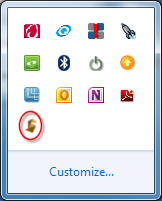Attention: The information on this page is applicable to the desktop version of Autodesk Simulation Mechanical. For Simulation Mechanical 360 (the cloud-based version), refer to the Simulation Job Manager branch of the Sim 360 Pro Help Web site.
Note: Simulation Mechanical 360 is a component of the Sim 360 Pro software bundle.
Introduction
The Mechanical Simulation Job Manager provides real-time status information for jobs run in Autodesk Simulation Mechanical. You can use the Mechanical Simulation Job Manager to perform the following tasks:
- Monitor the status of currently running simulations.
- Stop currently running simulations.
- Run simulation jobs in the background, even when the Simulation Mechanical user interface is not running.
There are two ways to open the Mechanical Simulation Job Manager:
- From the Windows® Start menu, click All Programs
 Autodesk
Autodesk Autodesk Mechanical Simulation Job Manager
Autodesk Mechanical Simulation Job Manager Mechanical Simulation Job Manager
Mechanical Simulation Job Manager - From the Notification Area, click the Mechanical Simulation Job Manager icon:

Simulation Process
- Set up one or more design scenarios within the Simulation Mechanical FEA Editor environment.
- Launch one or more jobs using either the Run Simulation command or the Solver Manager . If using the latter option, jobs can be scheduled to run at a particular date and time.
- Mechanical Simulation Job Manager runs the jobs and writes the results to the appropriate model folders. During this process, you can monitor the progress of each job. For the desktop version of the program, all simulations are run on the local computer.
Note: The Simulation Mechanical user interface does not have to continue running once the jobs have been submitted for analysis. The job manager continues working on the submitted solution tasks. After a job is finished, you can restart Simulation Mechanical, open the model, and review the results. You can also leave Simulation Mechanical open throughout the solution process, if desired.
Stop a Running Job
You can use the Mechanical Simulation Job Manager to stop a job that is running:
- Right-click on the job thumbnail or job name if the list view is active.
- Click Cancel.
Note: The simulation task terminates immediately. No further results are written to the hard drive. This behavior differs from earlier versions of Simulation Mechanical, where a current nonlinear iteration would be completed before the solution was stopped.